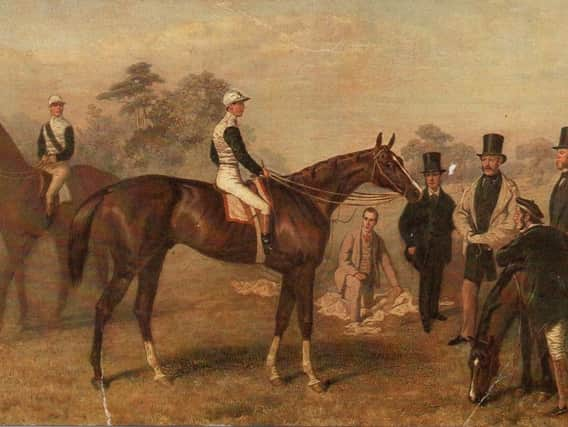Old Burnley: What happened to Kettledrum the racehorse after famous Epsom win?


There was a time, in the 19th Century, that horse racing was quite prominent.
Advertisement
Hide AdAdvertisement
Hide AdOf these, the most well-known was at Turf Moor, the name of which lives on in the name of the present football and cricket grounds. The other tracks were off Manchester Road in Burnley and near the Calder in Padiham.
However, Burnley’s most famous connection with racing is the chestnut British thoroughbred racehorse and sire, Kettledrum.
The horse was owned by Col. Charles Towneley, of Towneley Hall, and it won the Epsom Derby in 1861. Kettledrum was foaled in 1858 at Crofton-on-Tees, its breeder being James Cookson. It was bought for Col. Towneley by the trainer, George Oates, for 400 guineas.
Under the ownership of Col. Towneley, the horse was entered into eight races, winning four, coming second on two occasions and being unplaced twice.
Advertisement
Hide AdAdvertisement
Hide AdIn addition to winning the Derby, Kettledrum won the Doncaster Cup and came second in the 2,000 Guineas and the St Ledger. The horse enjoyed limited success at stud but was sold in 1870, with the rest of Col Towneley’s horses.
In 1872, the horse was exported to Austria-Hungary, for 4,000 guineas, before the animal died in 1885.
After the Derby success of 1861, it is thought that Col Towneley used his winnings to build the beautiful little Catholic church in Dunsop Bridge, in Lancashire.
There is also a public house known as the Kettledrum in Cliviger which is close to the Towneley estate. Kettledrum’s sire was Ratapan, itself the winner of the Doncaster Cup and the Cambridgeshire Handicap Chase. The Grandsire was The Baron, the Dam was Hybla and Damsire, the Provost.
Advertisement
Hide AdAdvertisement
Hide AdThis image shows Kettledrum ridden by its jockey, Ralph Bullock. Col. Towneley is on the right, wearing the light-coloured coat.
The painting is by the equestrian artist Henry Hall (1814-82) who came to prominence when working for Tattersall’s of Newmarket, the great bloodstock dealers who also had, of course, Burnley connections.